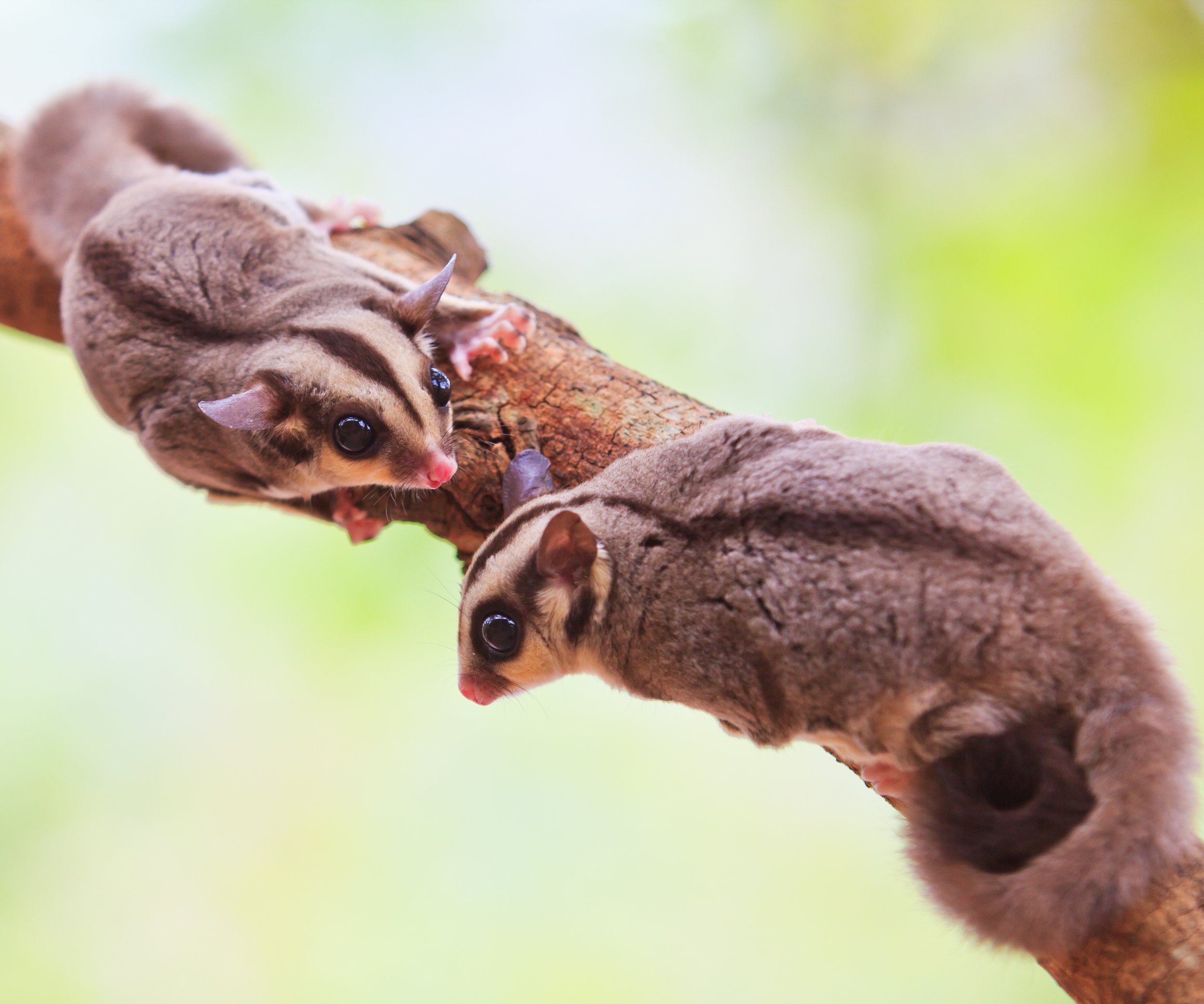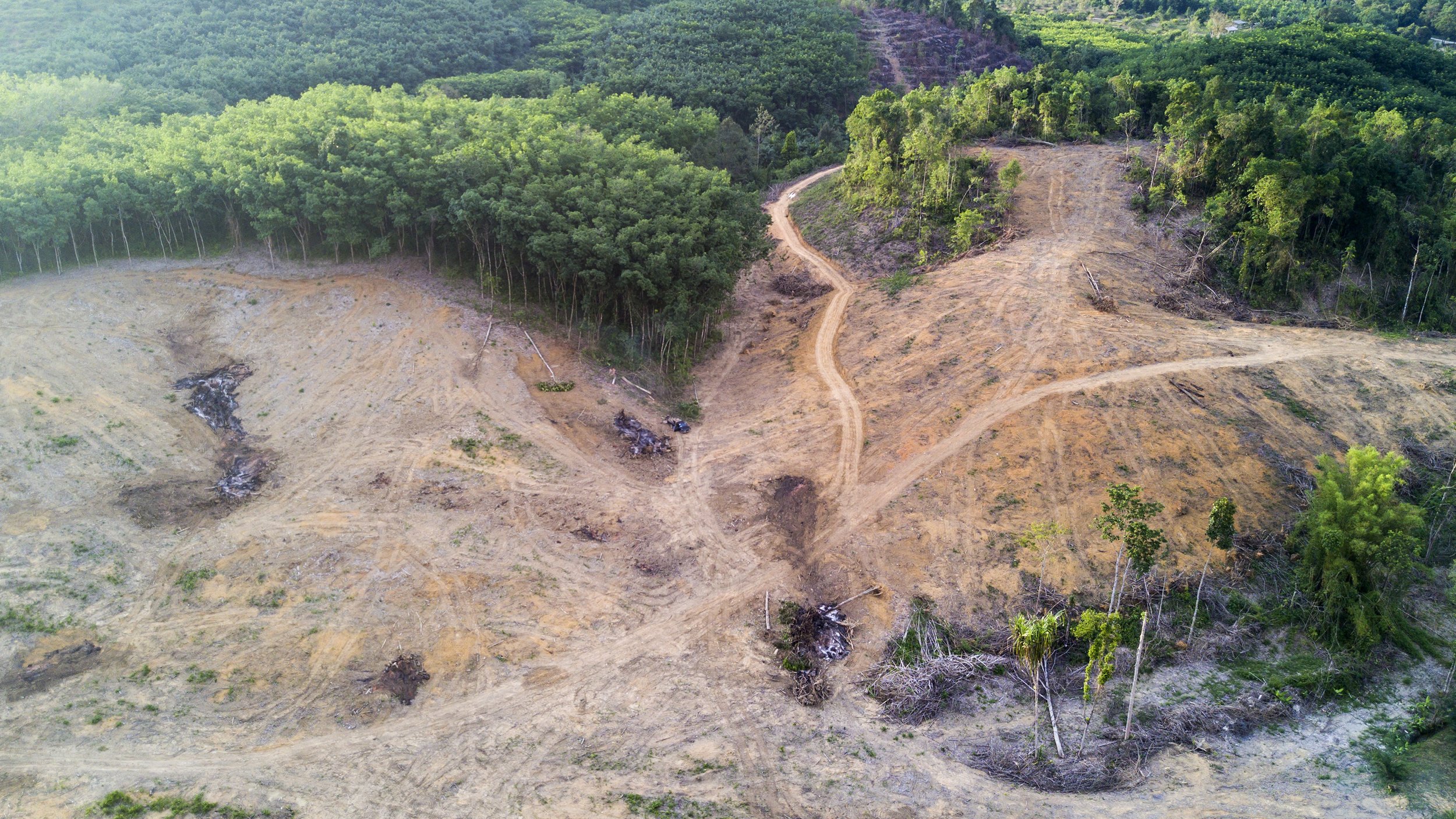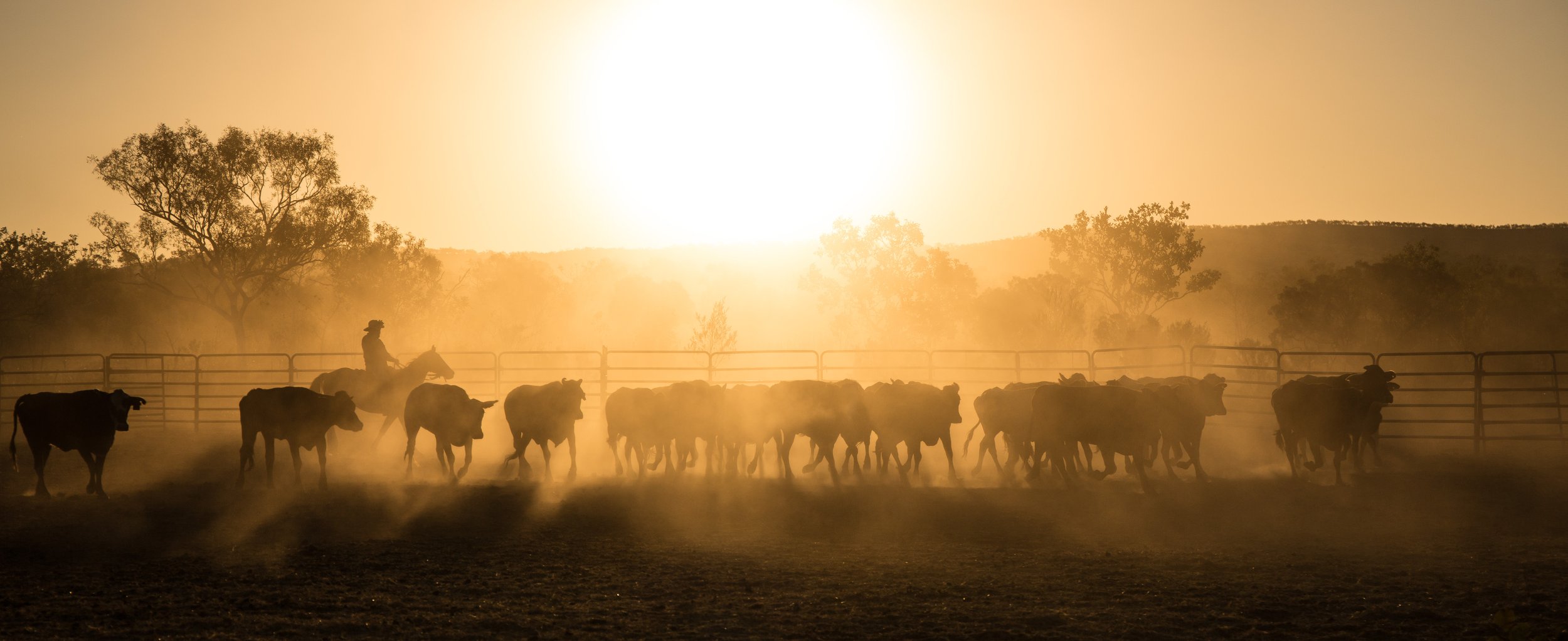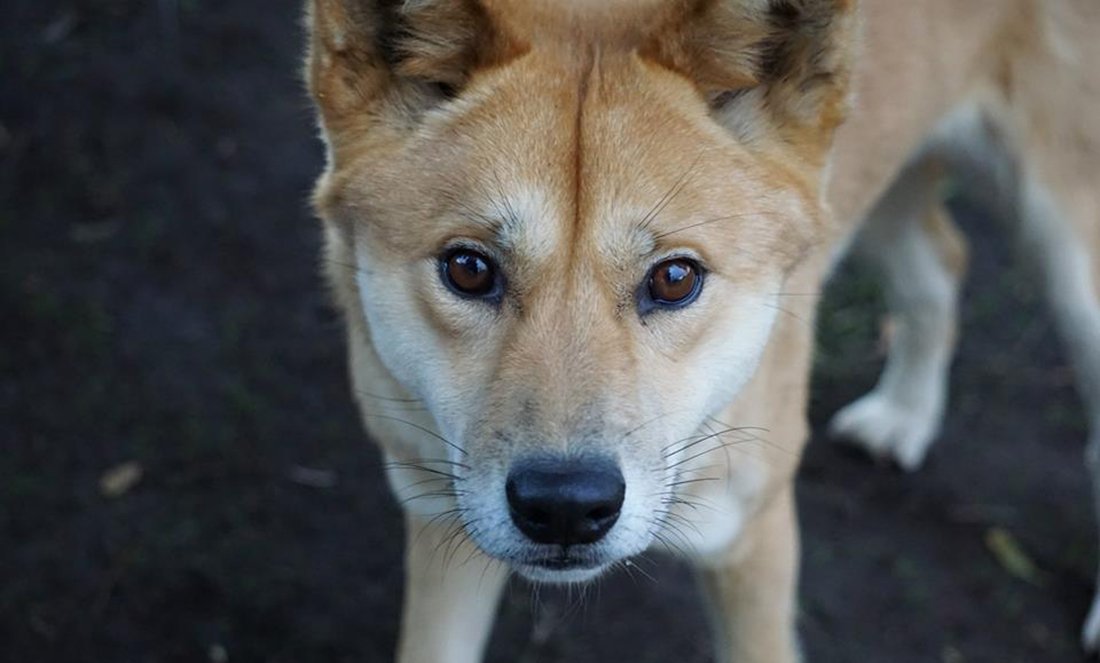
Climate crisis
The fight for climate justice is intimately linked to the fight to end species extinction.
Our planet is getting warmer. The Earth's temperature has risen by 0.08°C each decade since 1880 and the warming rate per decade has doubled over the last 40 years.
In 2021, the Intergovernmental Panel on Climate Change (IPCC) released their most comprehensive report on the global climate crisis to date. The report stated that “it is unequivocal that human influence has warmed the atmosphere, ocean and land”. As a result, “widespread and rapid changes in the atmosphere, ocean, cryosphere and biosphere have occurred”.
The worst is yet to come
Australia has already begun to suffer the devastating impacts of climate change. Marine heatwaves have resulted in three mass coral bleaching events on the Great Barrier Reef in just five years, catastrophic bushfires claimed the lives of three billion native animals in 2019/20, and in 2019 much of Australia was affected by drought, especially NSW - impacting a massive 95% of the state. Most recently, Queensland and New South Wales have experienced devastating flooding across the region, claiming the lives of wild animals, community members and farmed animals.
According to the UN, future implications Australia will face due to climate change includes the intensification of disasters we have already lived through; worsening of bushfires (both in severity and length of fire season), heavy rainfall events causing flooding (though many parts of the country will experience less rainfall), intensified and more frequent droughts, and although the amount of cyclones might decrease, their average intensity is expected to increase.
The number of days that break heat records has doubled in the past 50 years, and catastrophic water shortages are expected to occur in both regional and rural areas. Growing food and working outdoors would become impossible and infrastructure would be placed at serious risk.

Endangering our wildlife
Climate change poses a serious threat to Australian biodiversity, with ‘human-induced climate change’ listed as a key threat under various state laws. Our vulnerable wildlife will be faced with having to adapt to changes in water availability, fire regimes and land use, all while avoiding predation.
According to a report released by World Wildlife Fund, even if global mean temperatures were kept to 2°C, south-west Australia is predicted to become unsuitable for 30-60% of species across all groups. Australia’s current pledged levels of emissions will see half of all birds and reptiles and two-thirds of mammals, and close to 80% of amphibians disappear.
The impact of climate change on Australian wildlife is widespread, and it is only worsening. The consequences of this could see entire ecosystems become unable to be self-supporting, triggering a breakdown unable to sustain a population. The likelihood of extinction for a large portion of currently endangered and non-endangered species is high, unless swift action is taken to alleviate the destructive effects of climate change on wild-living populations of animals.
Drivers of climate change
Fossil Fuels
Society's reliance on fossil fuels has long been understood to drive the climate crisis. Fossil fuels supply around 80% of the world’s energy and are non-renewable, as they are formed from the decomposition of buried carbon-based organisms that died millions of years ago.
There are three main forms of fossil fuels; coal, oil and gas. Australia’s coal production reached 503 million tonnes in 2019, making it the sixth largest producer in the world and the country with the highest coal power emissions per capita. The IPCC’s 2021 climate report has called for urgent action to phase out fossil fuels in order to prevent global warming from rising to 1.5C.
Burning fossil fuels
To make power, fossil fuels are burnt to generate steam, which drives large turbines that produce electricity. Burning fossil fuels converts carbon to carbon dioxide and, if not captured and stored, is released into the atmosphere, warming the planet. Carbon dioxide absorbs infra-red radiation (heat) emitted by the warm surface of the earth, preventing its loss into space.
Burning fossil fuels is the leading contributor to global greenhouse gas emissions, with electricity and heat production accounting for 25% of total greenhouse gas emissions, transport - primarily through burning fossil fuels for road air and marine transportation - accounting for 14%, industry - primarily due to fossil fuels burnt on site at facilities for energy - accounting for 21%, and building - primarily through on-site energy generation and burning fossil fuels for heat in buildings - accounting for 6%.
Image: Drone images of the Adani Carmichael mine in central Queensland. The Wangan and Jagalingou people, the traditional owners of the land, have been saying no to the mine for 10 years.
Wangan & Jagalingou cultural custodians standing their ground against the Adani coal mine
In addition to the environmental destruction the fossil fuel industry causes, in Australia, mining operations are taking place on unceded land, often without the consent of Traditional Custodians.
The Wangan & Jagalingou people have been fighting to protect their sacred country and culture from the Adani coal mine for the past 10 years.
There is no free, prior or informed consent from their people. You can learn more about the Wangan & Jagalingou cultural custodians on their website below.
The animal industrial complex
Our current food system accounts for 13.7 billion tonnes of carbon dioxide equivalents annually. That is a whopping 26% of total greenhouse gas emissions.
Animal agriculture is a massive emitter of greenhouse gas, accounting for 16.5% of total global emissions. Worldwide, the production of animal-based foods, including growing crops to feed animals and pastures used for grazing, is responsible for contributing 57% of all greenhouse gas emissions linked to food production. Land-use change, including clearing for agriculture and the reduction in carbon storage produces nearly 30% of global food production greenhouse gas emissions.
European agricultural methods were applied across Australia after arrival in the late 1700s. These practices, including livestock grazing, spread across the continent over the following 150 years and continues to this day. However, a distinct lack of understanding and knowledge of the Australian landscape has led to inappropriate farming practices that have dramatically depleted limited natural resources. While the practice of “frontier farming” enabled the fledgling colonies to be fed and contributed to a nascent export economy, this caused widespread ecological consequences.

Habitat destruction
Animal agriculture for the sake of food and fashion is one of the leading causes of deforestation globally, requiring huge amounts of land for both grazing and growing crops to be fed to ‘livestock’ animals. In fact, livestock operations occupy 38.4% of habitable land and an additional 10% dedicated to growing crops to be fed to those animals.
Forests are carbon sinks, and trees play a pivotal role in storing carbon dioxide gas, preventing it from accumulating in the atmosphere. When trees are cleared, the CO2 they are storing is released. Additionally, those trees will no longer be there to collect and store CO2, so not only does deforestation emit large amounts of CO2, it also removes a valuable critical natural ally that acts to reduce climate change though the storing of greenhouse gas emissions.
In a quarter of a century, forests the size of India have been cleared for animal agriculture. During the 1990s, an estimated 94,000 square kilometers of forests shrank every year to make way for agriculture. Of all areas, South America’s forests have been identified as “ground zero” for deforestation due to animal agriculture.
Much of Australia’s landmass has been transformed by human activity, particularly via the extensive conversion of natural vegetation. In 2014, the Australian Bureau of Statistics found that 52% of the Australian landmass was being used for agriculture and that the vast majority (~84%) was predominantly used for grazing. In 2019, a statement signed by nearly 400 scientists explained that large-scale clearing or deforestation “contributes to increased fire risk by exacerbating climate change”.
Clearing for grazing
Despite a majority of animals used for human consumption are being raised in intensive farms, there is still a huge amount of land used for livestock grazing, in particular sheep and cattle. The flesh and skin of a single slaughtered bovine is equal to just 6 leather bags and the wool from an average sheep can produce fewer than 8 sweaters.
Cattle farming has driven significant land clearing in Australia’s worst deforesting state; Queensland, responsible for the removal of 549,844 hectares of woody vegetation between 2018-2019. Australia is a leading exporter of beef, the seventh largest cattle skin exporter and also accounts for between 5 and 10% of total global biodiversity loss, making us one of seven nations responsible for 50% of global biodiversity loss. Similarly, Brazil is the largest exporter of beef and the third most significant cattle skin exporter in the world and cattle ranging is responsible for mass amounts of deforestation in the Amazon rainforest.
Clearing for feed
Globally, upwards of 70 billion land animals are raised for food and fibre every year; unsurprisingly these animals, particularly those living in intensive feedlots and factory farms, consume a massive amount of feed, namely soy and cereals.
Shockingly, of all soy crops grown in the world, between 70-75% is fed to these farmed animals, while only 6% is consumed directly by humans. These monoculture crops require large areas of land, and with consumption of meat, dairy wool and leather on the rise globally, more and more land will be needed to feed the animals we raise for slaughter and consumption.
Global production of soy has doubled in the last 20 years, mostly due to the expansion of animal agriculture. Each year approximately 1.2 million acres of land are cleared for soy production in tropical climates and that number will continue to increase if the worldwide consumption of animal protein does not slow down.
It’s time to talk about the cow in the room: Methane & Climate Change

Methane
Though the entire agriculture sector contributes approximately 13% of greenhouse gas emissions in Australia each year, 42% of methane emissions are produced by animal agriculture.
Methane is a greenhouse gas approximately 84 times more potent than cO2 as a heat trapping gas over a 20 year period. This means, in terms of global warming potential, one tonne of methane is roughly equal to 84 tonnes of cO2 (across a 20 year period).
Ruminant animals (cows, sheep and goats) produce methane through a process known as enteric fermentation, meaning when they belch (burp) or pass wind, methane is released into the atmosphere. Similarly, as their manure breaks down, it too releases methane into the atmosphere, heating the planet. According to the Environmental Protection Agency, just one lactating dairy cow produces 50 litres of manure (including urine) every day, equating to around 19 tonnes annually.
The impact of animal-based farming becomes clearer when comparing the impacts of producing animal protein with plant protein. Take beef and tofu, for example; producing 100 grams of beef emits on average 50kg of greenhouse gas emissions, whilst the same amount of tofu produces just 2kg.
When we consider fashion, just one pair of cow skin leather boots is equal to 66kg of carbon equivalent emissions (CO2e), a whole 56.5kg more than even synthetic leather boots – the least sustainable leather alternative. Similarly, a knitted jumper made from sustainably sourced Australian cotton, as compared to wool, released 27 times less emissions.
Though methane is much more impactful than CO2 over a short period, it also breaks down in the atmosphere faster. In the global climate crisis we are currently facing, time is of the essence. Eliminating the methane produced by ruminant animals is essential to halting rapidly rising global temperatures.
It is widely accepted that producing animal-based foods produces more greenhouse gas emissions than plant-based foods, as well as plant-based clothing. The consumption of healthy and sustainable diets, predominantly consisting of plants, is a major opportunity for reducing greenhouse gas emissions and improving public health. This is one reason a shift towards a plant-based diet is recognised as an increasingly important response to reducing emissions and climate change by the United Nations.

Moving forward
Despite the grim outlook we currently face, there is still a small window of opportunity to take action and significantly reduce the impacts of the climate crisis. Utilising land for animal agriculture comes with a ‘carbon opportunity cost’, this is because animal agriculture is fundamentally inefficient and unsustainable.
A transition away from animal-based farming in favour of a plant-based system would reduce global farmland required from 4.1 billion hectares to 1 billion hectares, providing opportunity for land to be rewild and returned to nature.
This additional land could sequester an additional 8 billion tonnes of CO2 in vegetation and soils each year. In combination with eliminating the carbon footprint of raising animals for food, greenhouse gas emissions would be reduced by 14.7 billion tonnes of CO2 equivalent annually.
Transitioning to an entirely plant-based agricultural system by 2050, could sequester 99-163% of our carbon emission budget to 1.5 C.
A vital component of moving away from unsustainable and harmful farming systems, is looking to Indigenous communities, who lived sustainably on the Australian continent for more than 65,000 years before European occupation. Defend the Wild advocates for genuine and meaningful land rights for Indigenous communities, empowering them to make decisions about the care and protection of their sacred lands.
Learn more about the solutions below.
Take the pledge to be a Wildlife Defender today!
Join a growing community of people dedicated to the protection and preservation of this country’s wild places and faces by becoming a Wildlife Defender today!

Stay up to date with us!
Receive email updates on the progress of Defend the Wild and our latest campaigns by signing up to our mailing list.







